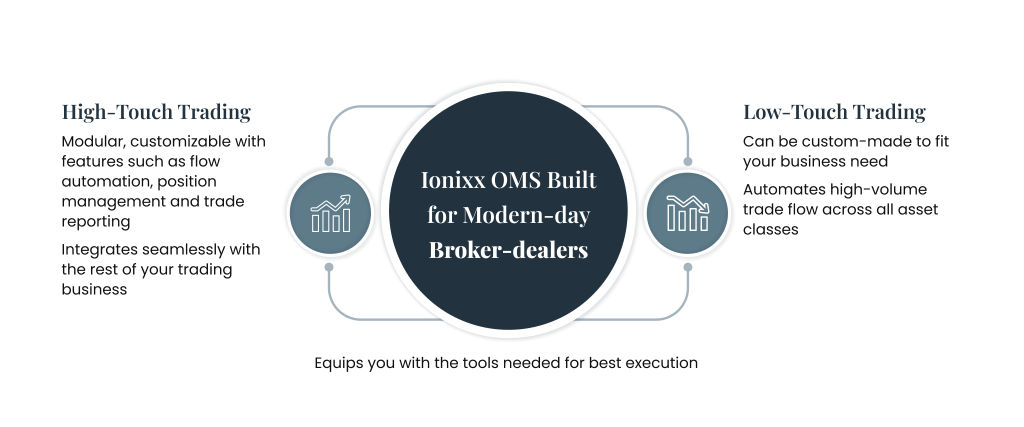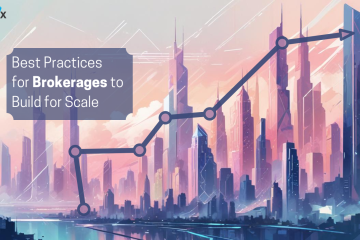Human to machine has been the watchword for the US equity electronic trading landscape, the way it has transitioned. Having come a long way from the days when most market-making and client order execution was carried out by human traders, the shift to automated low-touch trading has been rather tectonic.
As equity commissions continue to drop, it is a tell-tale sign that investors are shifting their execution channel usages, doing less high-touch and more low-touch. Sample this – In 2018, the total U.S. equity commissions dropped to $7.65 billion and this trend was observed as an eight-year streak.
From high-touch trading involving extensive human intervention to highly automated no-touch trading, Wall Street trading desks handling and routing the trades of investment managers are looking to move ahead with automation by leveraging emerging technologies such as AI, ML, RPA, and DLT.
However, that is not to discount manual intervention. In fact, it is noteworthy to recognize how personal touch can potentially be a key differentiator for broker-dealers seeking to leverage the most appropriate tech to achieve the most efficient execution. That’s also where bespoke solutions come into play.
In this article, we explore how trading execution methods have evolved over time by understanding each strategy (high-touch, mid-touch, low-touch, and no-touch trading), for their merit, outlining their definitions, historical evolution, when to employ them, the future of trading desks, best practices for implementation and associated challenges, and how bespoke solutions are the much-needed game-changer.
Understanding Low-touch And High-touch Trading
Trading methodologies can be categorized into high-touch, mid-touch, low-touch, and no-touch based on the level of human intervention and automation. High-touch trading involves a significant amount of human interaction, relying on personalized communication, relationships, and market expertise.
In contrast, low-touch trading relies heavily on automation, leveraging algorithms and electronic platforms for trade execution, minimizing human intervention.
The origins of high-touch trading can be traced back to the early days of financial markets when trading occurred primarily through personal interactions, phone calls, and face-to-face negotiations. On the other hand, low-touch trading emerged with the advent of electronic trading platforms and algorithmic trading, enabled by the rapid advancements in computing technology.
The Evolution of Low-touch Trading
The evolution of low-touch trading is deeply intertwined with changing market dynamics. Increased market volatility, globalization, and the need for faster and more efficient trading execution have fueled the shift toward low-touch trading. In a world where split-second decisions can make a significant difference, automation provides the speed and accuracy necessary for success.
When to Use High-touch And Low-touch Trading
The decision to use high-touch or low-touch trading depends on various factors, including the liquidity of the market, the complexity of trade structures, and the need for personalized insights. High-touch trading is ideal for illiquid markets or intricate trade strategies that necessitate human expertise and negotiation skills. In contrast, low-touch trading excels in liquid markets and simpler trade structures, where automation can execute trades swiftly and accurately.
For instance, in trading illiquid assets or navigating complex financial instruments, high-touch trading ensures a nuanced approach, considering market nuances and unique circumstances. On the other hand, low-touch trading shines when dealing with highly liquid assets like major currencies or large-cap stocks, where speed and precision are paramount.
The Future of Trading Desks
The future of trading desks is undeniably intertwined with the advancements in artificial intelligence (AI) and machine learning. These technologies are poised to revolutionize trading strategies by enabling pre-trade and post-trade Transaction Cost Analysis (TCA), reducing latencies, and enhancing both fundamental and technical analysis. Machine learning algorithms can process vast amounts of data and identify trading patterns, optimizing decision-making and performance.
As AI continues to evolve, it’s plausible that trading desks will lean towards a no-touch approach, with AI-driven algorithms executing trades based on pre-set criteria, market analysis, and risk parameters. This evolution will result in increased efficiency, reduced errors, and enhanced profitability.
Implementing Low-Touch Trading: Best Practices
To successfully transition towards low-touch trading, firms could probably adopt the following best practices:
- Prioritize employee training and upskilling: Brokerage firms should focus on curating training programs that help their teams acquire technological proficiency, algorithmic understanding, and risk management.
- Integrate with vendors: Seamless integration with reliable partners for algo trading, Transaction Cost Analysis (TCA), and other analytics is essential for a smooth transition from high-touch to low-touch.
- Encourage collaboration between IT and trading departments: As much as it sounds like a no-brainer, this aspect translates to important outcomes and helps ensure that the technology deployed aligns with the specific trading strategies and objectives of the firm.
- Conduct regular assessments and evaluations: In order to optimize the use of algorithms and minimize risks, it is important to include regular checks and evaluation systems.
Challenges And Risks of Low-touch Trading
While low-touch trading offers immense benefits, it’s not without challenges and risks. One significant concern is the potential ethical implications, especially when algorithms or AI play a dominant role in decision-making. Ensuring that comprehensive risk checks are in place, covering compliance, regulatory adherence, and market impact, is critical to mitigate these risks. Over-reliance on automation can lead to a lack of human oversight, potentially amplifying market volatility and risks.
Additionally, the risk of system failures, cyber-attacks, or erroneous algorithms can result in substantial financial losses and reputational damage. Hence, robust risk management frameworks, thorough testing, and continuous monitoring are imperative.
How Bespoke Solutions Help in Efficient Trade Execution

The game has changed from having to send the order flow to your sales trader friend to having CRM- based sales trader technologies, that help investment advisors to communicate to the clients/investors effortlessly in any medium of communication preferred by the client.
As the securities trading landscape continues to evolve, broker-dealers have begun seeking solutions that are tailored to cover both high-touch and low-touch trading (Also called Mid-touch trading), all in one trading platform. For example, Fin-tech companies like ours are able to provide trading solutions that cater to low-touch trading needs, while several companies that offer digital platform trading solutions provide a seamless trading experience for clients and advisors who prefer high-touch solutions.
A mix of both high-touch and low-touch trading, that provides a competitive advantage has brought brokerage firms to lean towards these bespoke solutions that accommodate both types.
High-touch trading is still working a considerable amount of trade dealings are still widely affected by direct or indirect relationships, putting back the sales traders in place within this equation of trade execution. Moreover, technology has aided in making communication easier between clients and advisors, through several forms such as social media, IM platforms, group chats, email, etc.. Streamlining book-keeping methods is an important step in this regard, particularly to stay regulatory compliant.
Closing Lines
The evolution from high-touch to no-touch trading exemplifies the transformative power of technology in the financial world. As the industry continues to evolve, striking the right balance between human expertise and technological automation will be critical for success. For firms looking to embrace low-touch trading, training, and integration with reliable technology partners are key. The road ahead undoubtedly holds exciting possibilities, where the integration of AI and machine learning is set to redefine the landscape of trading, making it more efficient, data-driven, and ultimately, more profitable.
Ionixx Technologies, with its seasoned expertise in the financial services and trading domain combined with strong technology know-how, can help you build trading solutions that reduce Opex, increase efficiency, and drive innovation.
What steps will you take to adapt and thrive in the evolving trading landscape?


